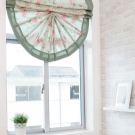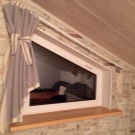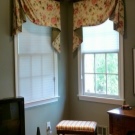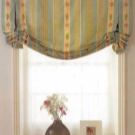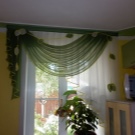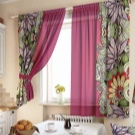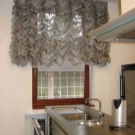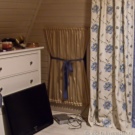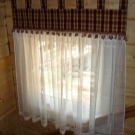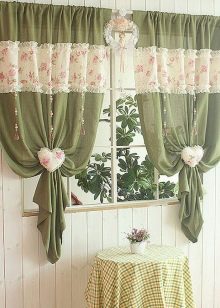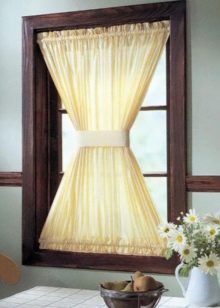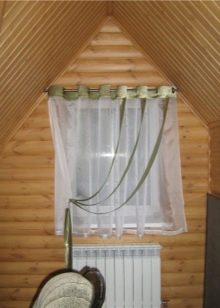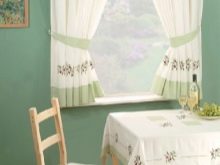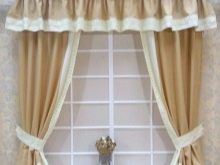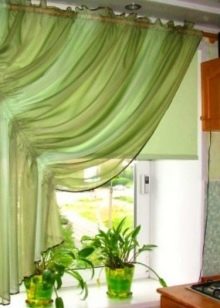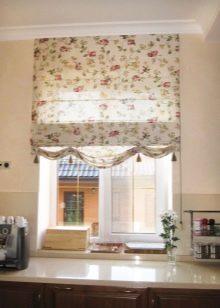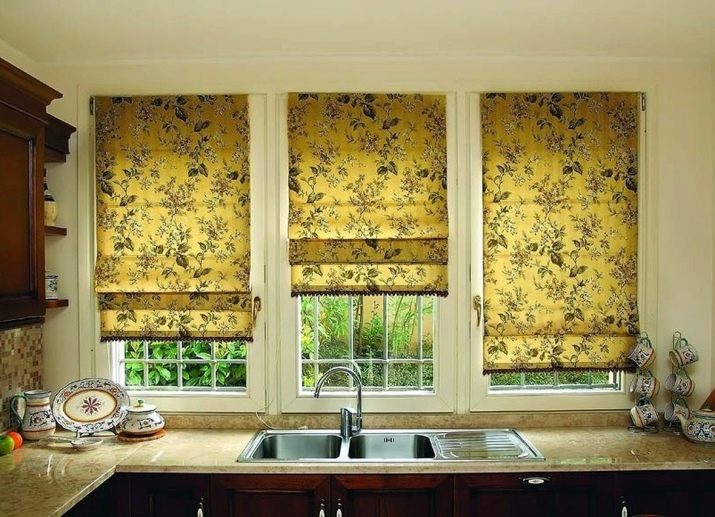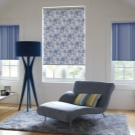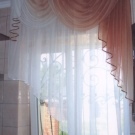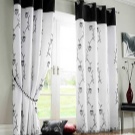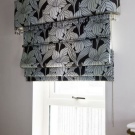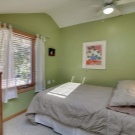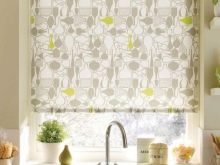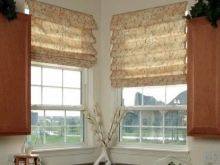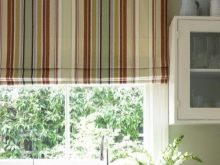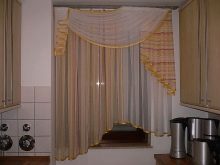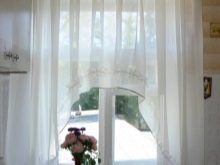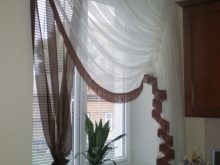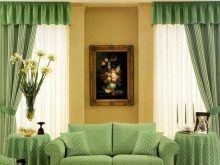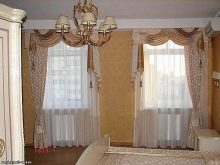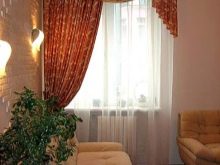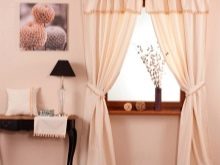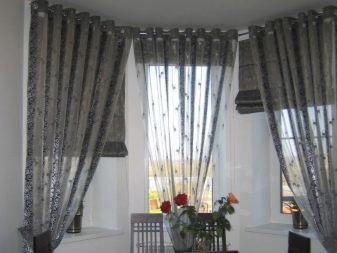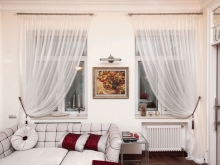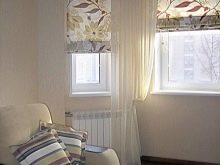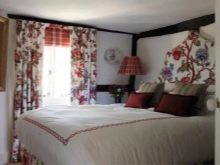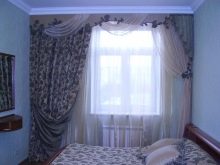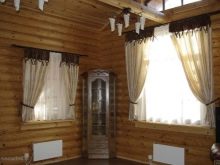Choosing curtains on a small window
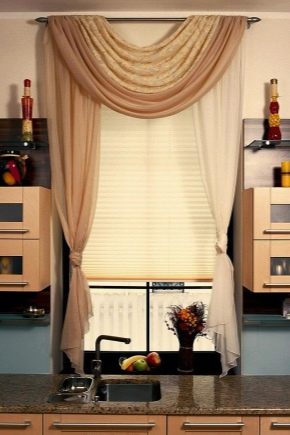
Curtains are an important element of the decoration of the window opening, which has both aesthetic and practical functions. This textile is designed to hide the owners from prying eyes, as well as to adjust the illumination of the room. Recently, more and more attention is paid to the aesthetic component: the curtains should be not only functional, but also selected for the interior, as well as emphasizing the window opening. Choosing the right curtains is complicated if they are going to be installed on a small window, since a large number of restrictions appear.
Basic rules for selection
When selecting curtains and additional textiles, designers advise to take into account the peculiarities of the interior, which will be set off by curtains, but at the same time they are asked to follow the basic general rules:
- Choose monochrome products.They do not catch the eye to a small window and visually enlarge the opening.
- Abandon the decor. Additional elements on the curtains make them more voluminous, and the owner feels that the window is completely hidden behind aggressively decorated textiles. Only in exceptional cases is a small and simple pattern allowed: a cage, dull peas, and plant motifs.
- Abandon curtains in the floor. A narrow or low window will look awkward against the background of massive long curtains. If the window opening is small, then the curtains should not be large.
- Correctly install the eaves. It should be wider than the window opening, as this will visually increase the size of the window. At the ends of the eaves, you can install a soft, but interesting in shape decorative nozzles. They will distract the attention of the guests from the opening.
- Use additional elements on top. Since the curtains themselves are rarely decorated only in the upper part, it is recommended to purchase other types of curtains. The best way to elegantly disguise the small size of the window opening is to use a lambrequin. This element is a short but wide textile strip,similar to a heavily trimmed curtain.
Lambrequin occupies no more than a quarter of the window at the top, so it does not “eat up” the daylight. At the same time, he creates the illusion of an impressive window opening.
- Use curtains or holders for curtains. If classical curtains were chosen, which are two textile bands, it is recommended to put the curtains closer to the bottom and take them to the side from the windows. Thus, the line of curtains will smoothly expand. Holders are better placed at 10-15 cm from the window opening, so that from the bottom it does not block at all, but is only gently framed.
- If style allows, use simple Roman blinds. When folded, they perform the function of lambrequins, drawing attention to the upper part of the window, and in the open they do not press down, but they seem to be light. Such curtains are practical, are one of the modern trends, and also practically do not collect dust on themselves.
- Select curtains exactly the style of the room. If the curtains turn out to be too original and knock out from the general gamma and atmosphere, they will invariably attract the eye and focus attention on the lack of a window.
When making a small window, it is advisable to use the services of a designer in order to avoid elementary mistakes.However, an amateur who has familiarized himself with the above rules can cope with the task.
Observe the unity of style and scale is very important, but, in addition, you should choose the curtains also on the principle of practicality, as well as on the basis of their purpose.
For kitchen
Kitchen space is one of the most used in the house. It is here that textiles get dirty the quickest because they are exposed to various fumes, and sometimes stains from food or drinks appear on it. When selecting curtains, it is important to consider the level of practicality.
Long curtains of thick fabric are poorly suited for the kitchen. They not only “eat” the visual space, but also quickly get dirty, and they will wash and dry for a long time. If the owner wants to visually expand the window and at the same time choose curtains not to the detriment of practicality, one should focus on modern models of Roman or roller blinds made of artificial materials. Synthetic fiber dries faster and less dirty. It is often treated with a special compound that repels dust and dirt.
The best choice would be light Roman curtains with horizontal soft stripes.This type of pattern visually expands the window.
If the window is very small or goes to the north side, where the sun is never enough, it is recommended to use light translucent tulle instead of Roman curtains. It can be white or light pastel shades. High-quality tulle allows you to partially hide the owners from prying eyes and at the same time passes sunlight, and does not absorb it. Tulle is easy to wash and dries quickly. But due to the light texture and monotonous dyeing, tulle textiles do not allow to completely hide the lack of a window.
To make guests and households less notice the small size of the window, you should use a restrained style pelmet. In the kitchen, it should not be a piece of velvet draped and trimmed with a fringe, but light, light material, cut to a simple geometric shape. The abundance of brushes will make the pelmet too massive and oppressive to the entire space of the kitchen.
Decoration in the living room
Living room - a place where there should be the greatest amount of natural light, because it is here that the hosts receive guests, spend their leisure time and often engage in work activities.Light is necessary to maintain the activity of households. If the window is small in size, the problem of natural lighting becomes even more acute.
Curtains in this type of room should be large enough, since all the furniture in the living room is usually characterized by large dimensions. Light translucent tulle on the background of a large sofa or modular storage system will look ridiculous. In addition, the living room requires more privacy than the kitchen, and therefore more dense curtains.
Designers believe that the optimal solution in this case is the hand-made sewing of curtains made of light, but dense materials. From the outside (facing the street), the fabric should be qualitatively colored so that the dye does not fade under the influence of the sun. From the inside, which is accessible to the eyes of the household, there should be no catchy patterns. The principle of minimalism persists here. Attention should be paid to the products of the following colors:
- purple
- light blue;
- Gray;
- lavender;
- pistachio;
- light pink;
- soft orange;
- beige.
The most versatile option are gray curtains.They emphasize the black and white interior, emphasize the red-gray, and also look good on the background of the premises, decorated under the Scandinavian style. But to focus on the choice of color should be primarily on the color scheme of the entire interior. Perhaps the consultant will help in choosing the color of the fabric. In large stores of home textiles work designers, even ready to create a fast three-dimensional floor plan with the arrangement of colors. Under it will already be selected curtains. This service is not free, but it will be much cheaper than hiring a designer separately.
If it is necessary to hide the living room from the outside, but leave it sufficiently sunny, you should use light Roman curtains or thicker curtains with small translucent areas. For example, curtains are sold with a geometric pattern made of translucent material. Recall that simple patterns, especially horizontal ones, are not a minus, but only an advantage for a small window opening. But complex compositions in the hall are strictly prohibited.
In the living room, as in other rooms, the main rule should be observed: curtains are short and wide.If you want to frame the window opening to the floor, you can use a light shade tulle that does not attract attention.
For the bedroom
In the bedroom you need to create the most intimate atmosphere, so the material is always selected tight and lightproof. It is recommended to make a set of different curtains: thick curtains designed to protect against the light of lanterns at night, translucent Roman curtains to hide from prying eyes during the day, as well as tulle, which at any time serves as a frame. It is important to remember that the more types of curtains used at the same time, the harder it is to create a harmonious composition.
If the owner wants to restrict himself to only one type of curtains, then for a small window opening the Roman or rolled curtain of a light shade with a lambrequin in the upper part will be optimal. It is also recommended to consider the option of stylized wood blinds. The original texture of these blinds will not steal the comfort of home.
In a country house
Curtains in village houses should be as light as possible. This allows you to visually increase the usually small space, as well as create a fresh mood.Since you have to visit a country house mainly in the summer, you can use southern stylistics when finishing: Italian, Provence. Beautiful curtains are also recommended in this style.
The ideal solution for a rustic window opening will be light tulle. Country areas are usually quite fenced off from prying eyes, so you can not additionally care about the selection of thick curtains.
Tulle misses the air in the summer, does not hide and so a small window space and at the same time protects from the scorching rays, scattering them.
For information on which curtains fit small windows, see the following video.

